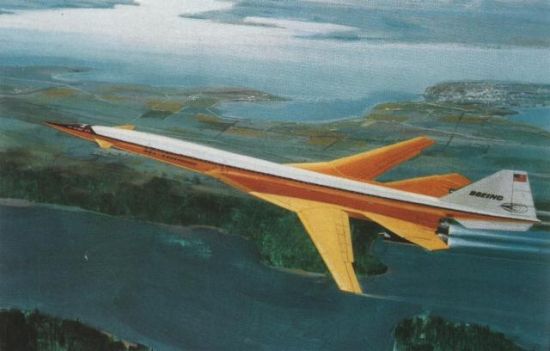President Kennedy and the SST – July 12, 2019

The Blackburn Beverly – June 5, 2019
July 5, 2019
Harold Gatty – The Man Who Showed Aviation Pioneers The Way – July 19, 2019
July 20, 2019RN3DB
July 12, 2019
Good Morning,
This week is a reprint of one of my favorite articles and it shows how Government can help and hurt at the same time. The Kennedy years were troubled years, sprinkled with some major accomplishments, and President Kennedy’s commitment to put a man on the moon would prove to be the crowning jewel; however, how many of us know, remember, that it was also President Kennedy who started the race to build the Super Sonic Transport?
On June 5, 1963, during a speech being given at the Air Force Academy, President Kennedy announced that the government would team up with private industry to build the world’s fastest commercial airliner that would be superior to any other country. Of course what the President was saying was that the U.S. would produce a superior machine to what the Anglo-French project called the Concorde. The president later remarked off camera that “We’ll beat that bastard De Gaulle.”
So began the race for speed……………
President Kennedy’s Quest for Speed
The Kennedy administration was confronted with many difficult situations but amid the turmoil Kennedy established several milestones that would propel the U.S. forward, technologically, in an effort to maintain our position as number one. We are all familiar with the Apollo program but Kennedy was also responsible for the SST program.
The pressure was on the administration to respond to the Anglo-French Concorde, as well as the Soviet’s TU-144, in order to protect America’s leadership position in aerospace as well as the balance of payments in the international arena. Pan Am had already announced that they were taking options on six Concordes as well as BOAC and Air France had announced they would be signing options as well.
The administration’s response was to propose a bigger, and faster, version of the SST. Kennedy had already been briefed by a multi-agency committee, headed up by Vice President Johnson, that a larger, and faster, version of the SST was feasible. The proposal revealed that an airplane capable of 2000 MPH, three times the speed of jet liners introduced only a few years earlier, carrying 300 passengers was attainable; however, Kennedy proposed to Congress that this could be done for one billion dollars which would prove to be way off the mark.
Although the U.S. was getting in to the race behind the Concorde, and the Soviets, the airplane Kennedy envisioned would be faster and more efficient than that which had been proposed, and administration officials pointed out that the Europeans, in their haste to be first, had sacrificed the potential to grow in speed and size. Finally, after months of review by the FAA four companies were asked to submit final proposals. GE and Pratt and Whitney were to compete for the engine to power America’s SST and Boeing and Lockheed would compete to be the manufacturer of the airframe.
Boeing came forward with the boldest design of all. Their concept used variable-geometry wings which was unprecedented for civil aviation. Boeing had perfected the swing wing design when they were competing for the multiservice fighter contract that was awarded to General Dynamics and their F-111 concept. In addition to the swing wing GE was proposing an updated version of the YJ-93 engine that they were using on the XB-70 (see photo below). GE designated the new engine the GE4 and their engine would develop supersonic speed by being the world’s largest afterburner. While Boeing was the ultimate winner in the competition, along with GE, there were many difficult problems to overcome. However, the one problem they could not fix was the mindset of Congress.
Lockheed would put forth a design modeled after a secret reconnaissance aircraft that would later become famous as the SR-71 Blackbird. Lockheed’s design would be faster at Mach 3, as opposed to Mach 2.7 proposed by Boeing, and would also carry 300 passengers; however, their design was rejected because of the “Delta Wing.” What is ironic about this rejection is that Boeing was forced to abandon the “Variable-Geometry Wing,” because of weight, and adopted the “Delta Wing” in its final design much to the surprise of Lockheed and others.
The showdown on continuing the construction of the two prototypes by Boeing came in 1971 when Congress was asked for another eighty-three million dollars to continue the program. All of the supporters of the program argued it would be foolish to cancel the program considering the one billion dollars already invested but Washington was not listening. The program was canceled.
Much of the blame for the cancellation was given to the environmental groups who had lobbied hard for their cause. These groups had taken out ads declaring the SST would shatter windows in homes, stampede cattle and other range animals, and would hasten the end of the “American Wilderness.” However, in the final analysis Washington concluded that the project just didn’t make sense. With air travel in a slump, and fuel prices soaring, even Boeing, GE, and most airlines had doubts about the success of the airplane.
Considering the lack of success by the Concorde the decision by Congress seems to have been the right one.
Cancelling the SST program idled over 13,000 aerospace workers and years later Boeing’s CEO admitted that they came very close to declaring bankruptcy; however, they did survive, as did GE who had to idle more than 1600 employees, and both companies maintained their leadership role in the industry.
That is it for this week. I hope everyone has a good weekend and will enjoy some free time away from work. Please join me next week when I will talk about commercial aviation after the SST.
Robert Novell
July 12, 2019





